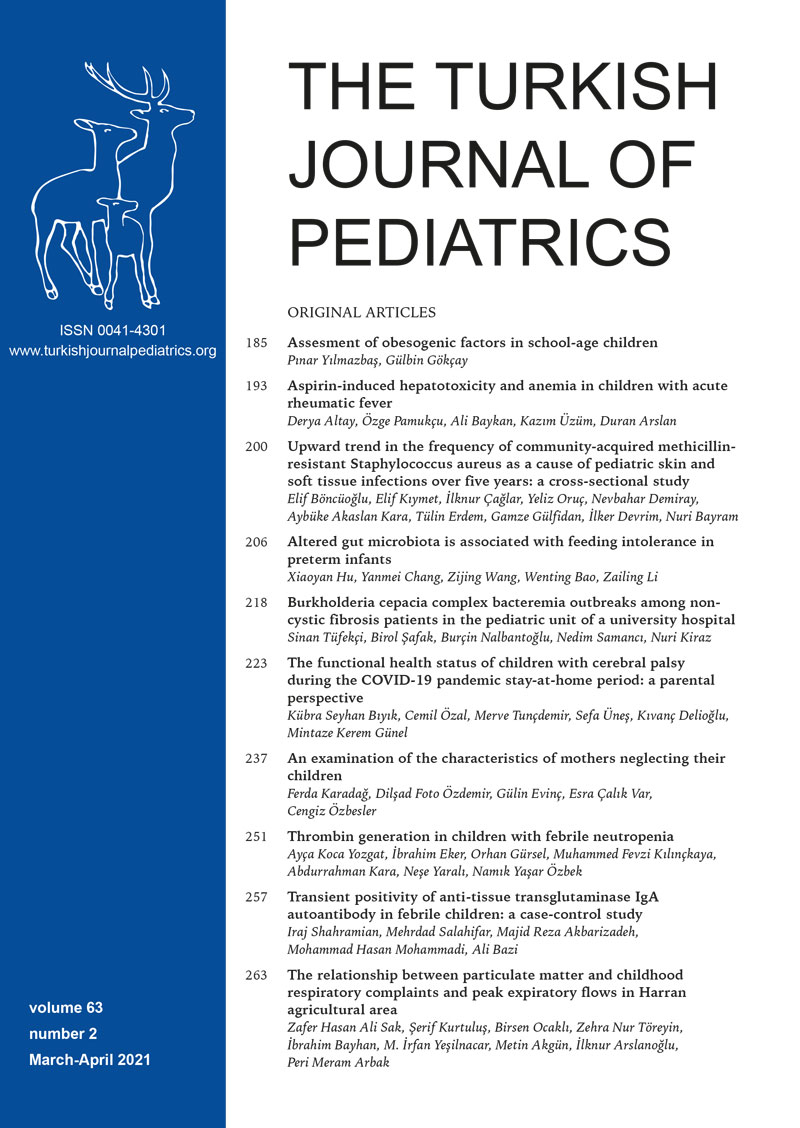Abstract
Background. The increasing prevalence of methicillin-resistant Staphylococcus aureus (MRSA) and its resistance to multiple antibiotics has become a serious challenge since the early 2000s. Especially, community-acquired MRSA (CA-MRSA) infections that appear mainly as skin and soft tissue infections (SSTIs) tend to increase worldwide. The objective of this cross-sectional study was to evaluate the trends in the frequency of SSTIs due to community-acquired S. aureus among children.
Methods. All children with SSTIs caused by culture positive community-acquired S. aureus during the period from 2013 to 2018 were included in this study. Data of the outpatients were collected from medical records. Annual alteration in frequencies of CA-MRSA and community-acquired methicillin-sensitive S. aureus (CAMSSA) were evaluated.
Results. A total of 112 cases was evaluated. Of these, 35 (31.25%) were CA-MRSA. The rates of CA-MRSA had emerged from an increasing annual frequency of 9.5 cases per 10,000 SSTIs as of 2014 to 96.8 cases per 10,000 SSTIs in 2018. The ratio of cases with CA-MRSA to cases with CA-MSSA was 0 - 0.09 in two years of the study period and increased to a maximum ratio of 0.6 - 0.72 in the last two years. Consequently, the frequency of S. aureus in cases with SSTIs was significantly higher in 2016 - 2018 compared to the initial study period within the years of 2013-2015 [p < 0.001, relative risk increase: 7 (2.6-28.7) for CA-MRSA and p=0.002, relative risk increase: 2.1 (1.2-3.5)]. Cases with CA-MRSA increased approximately eight-fold during the six-year-study period.
Conclusions. The rates of CA-MRSA in SSTIs among children increased significantly compared to CA-MSSA. The clinical impact of this increase should be evaluated, especially in patients with SSTI who are unresponsive to empirical treatment.
Keywords: Methicillin-resistant Staphylococcus aureus, child, infectious, skin diseases, soft tissue infections
Copyright and license
Copyright © 2021 The Author(s). This is an open access article distributed under the Creative Commons Attribution License (CC BY), which permits unrestricted use, distribution, and reproduction in any medium or format, provided the original work is properly cited.














